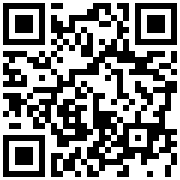作者:富连达发布日期:2023-07-20浏览人数:115
Introduction of Relay
A relay is an electrical control device that is an electrical appliance that causes a predetermined step change in the controlled quantity in an electrical output circuit when the change in the input quantity (excitation) meets a specified requirement. It has an interactive relationship between the control system (also known as input circuit) and the controlled system (also known as output circuit). Usually used in automated control circuits, it is actually a kind of "automatic switch" that controls the operation of large currents with small currents. Therefore, it plays the role of automatic adjustment, safety protection, and switching circuits in the circuit.
The main role of relays
Relay is an automatic switching element with isolation function, widely used in remote control, telemetry, communications, automatic control, electromechanical integration and power electronic equipment, is one of the most important control components. Relays generally have a certain input variables (such as current, voltage, power, impedance, frequency, temperature, pressure, speed, light, etc.) can reflect the sensing mechanism (input part); there can be controlled circuit to achieve "on", "off" control of the actuator (output part); in the relay of the circuit to achieve "on", "off" control (output part); in the relay of the automatic switching function of isolation. Output section); between the input and output sections of the relay, there is coupling and isolation of the input, functional processing and drive the output section of the intermediate institutions (drive section).
As a control element, in general, the relay has the following roles:
(1) expand the control range: for example, multi-contact relay control signal to a certain value, according to the different forms of contact groups, while switching, open and close the multi-channel circuit.
(2) amplification: for example, sensitive relays, intermediate relays, etc., with a very small amount of control, you can control a very high power circuit.
(3) Comprehensive signal: for example, when multiple control signals are input into the multi-winding relay in a specified form, they are compared and synthesized to achieve the intended control effect.
(4) Automatic, remote control, monitoring: for example, the relay on the automatic device together with other electrical appliances, can be formed into a program control line, so as to realize automatic operation.
Testing of relays
(1) Measure the contact resistance: use the resistance block of the multimeter to measure the normally closed contact and the moving point resistance, the resistance value should be 0; and the normally open contact and the moving point of the resistance value is infinity. This can distinguish that is normally closed contacts, that is normally open contacts.
② Measure the coil resistance: use the multimeter R × 10 block to measure the resistance of the relay coil, so as to determine whether the coil is open.
(iii) Measurement of suction voltage and suction current: Use an adjustable regulated power supply and an ammeter to input a set of voltages to the relay, and monitor it with an ammeter in the power supply circuit. Slowly increase the supply voltage, hear the sound of the relay suction, record the suction voltage and suction current. For accuracy, try averaging several times.
④ Measure the release voltage and release current: also connect the test as above, when the relay is absorbed, and then gradually reduce the supply voltage, when you hear the sound of the relay releasing again, write down the voltage and current at this time, and you can also try many times to get the average of the release voltage and release current. Generally, the release voltage of the relay is 10%~50% of the suction voltage. If the release voltage is small (less than 1/10 of the suction voltage), the relay can not be used normally, which will pose a threat to the stability of the circuit and make the work unreliable.
Furunda Relay
Ltd. is a NI alliance, agents, system integrators, mainly NIGPIB, NILABVIEW, NIDAQ, NI boards, NI data acquisition cards and other products. The company has a full set of hardware and software for product testing should be run solutions, the development scope includes ICT, Boundary Scan, functional testing, system testing. Business covers Shenzhen, Guangzhou, Zhuhai, Foshan, Nanjing, Hangzhou, Xiamen, Xi'an, Chengdu, Wuhan, Chongqing, Beijing and other places.
You can contact online customer service if you need!

